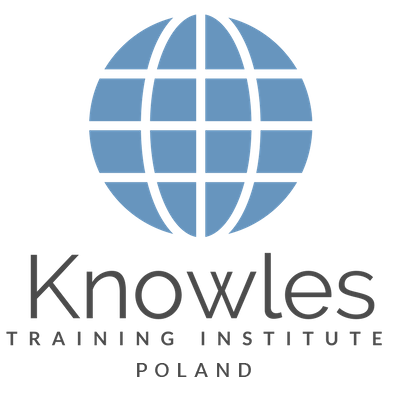Personal Productivity Training Course in Poland
Our corporate training course is also available in Warsaw, Kraków, Łódź, Wrocław, Poznań, Gdańsk, Szczecin, Bydgoszcz, Lublin, Białystok, Katowice, Gdynia, Częstochowa, Radom, Sosnowiec, Toruń, Kielce, Rzeszów, Gliwice, Zabrze, Olsztyn, Bielsko-Biała, Bytom, Zielona Góra, Rybnik, Ruda Śląska, Tychy, Opole, Gorzów Wielkopolski, Dąbrowa Górnicza, Zakopane, and Sopot.

About This Personal Productivity Training Course in Poland
Personal Productivity Management Course in Poland
Personal productivity refers to a set of activities, processes, and programs that a person can create to optimize his or her productivity and efficiency. It entails completing actions that move you closer to achieving your goals in a manner that brings ease and balance to your life. Also, it is about completing the action cycle. You need to understand what your objectives are and the right actions to be taken.
Most people do not achieve their goals because they started working on the wrong goals. If you are working in an organization, it is imperative to start on the right part. Thus, you should ensure your goal is a SMART one.
In this case, SMART is an abbreviation for:
Specific
Measurable
Attainable
Realistic
Timely
If you are an employee, being told to improve your personal productivity is not sufficient. You should ask for the given instructions on what you are supposed to do to improve your performances. The instructions you get should be precise. If goals cannot be measured, they cannot be monitored. You should design your goals in a manner that is empirical. You cannot work on goals that are impossible to achieve.
Personal productivity can be traced back to David A. Kolb who came up with the Kolb’s Learning Cycle. According to him, these four factors are important in enhancing productivity: experiencing, experimenting, conceptualizing, and observing. Also, Frederic Herzberg in his business management books argues that ownership, recognition, achievement, and nature of work are factors that motivate an employee to improve personal productivity.
Who Should Attend This Personal Productivity Training Course in Poland Workshop
This Personal Productivity Training Course in Poland workshop is ideal for anyone who would like to gain a strong grasp and improve their Personal Productivity.
All Staff Within An Organisation
Managers
Team Leaders
Executives
Assistants
Officers
Secretaries
Group Size For This Personal Productivity Training Program Course in Poland
The ideal group size for this Personal Productivity course in Poland is:
Minimum: 5 Participants
Maximum: 15 Participants
Course Duration For This Personal Productivity Skills Training Course in Poland
The duration of this Personal Productivity Training Course in Poland workshop is 2 full days. Knowles Training Institute Poland will also be able to contextualised this workshop according to different durations; 3 full days, 1 day, half day, 90 minutes and 60 minutes.
2 Full Days
9 a.m to 5 p.m
Personal Productivity Training Course in Poland Benefits
Below is the list of course benefits of our Personal Productivity course in Poland
- Become less stressed and better organized
- Focus on deliverables
- Grow as a leader
- Improve your health
- Improve time management skills
- Improve your communication and organizing skills
- Lower your operational costs
Personal Productivity Training Course in Poland Objectives
Below is the list of course objectives of our Personal Productivity course in Poland
- Evaluate and set SMART goals
- Learn how to begin and start new projects and tasks on the right foot
- Learn how to use a to-do list effectively
- Know how to handle procrastination
- Organize your virtual and physical workspaces to achieve maximum efficiency
- Master effective scheduling tools for the efficient use of time
- Know how to use routines to maximize your productivity
- Learn how to improve your leadership skills
- How to deal with interruptions effectively
- Learn a powerful and effective daily planning system
- Know how to track accomplishments and goals
- Increase your productivity through establishing your priorities
- Thrive in any learning environment
Course Content For This Personal Productivity Training Course in Poland
Below is the list of course content of our Personal Productivity training course in Poland
- What is productivity and it is nature?
- Achieving goals through time management
- Learn how to stay focused on what matters and find job satisfaction
- Know how to automate your routines so that productivity becomes a habit
- Do away with bad habits that can cost you hours for no reason
- Learn how to stay energized and be on top of your game, so that you can work without burning out
- Understand the schedule creation procedure and how it works
- Learn how to multiply your personal productivity, implement powerful routine rituals, and have laser-focus
- Learn how to make sure you are doing the right work, instead of just being busy
- How you can improve productivity through communication
- Various project management tools and resources
Personal Productivity Training Course in Poland Value Added Materials
Each participant will receive the following materials for the Personal Productivity course in Poland
Productivity Training Course in Poland Learner’s Guide
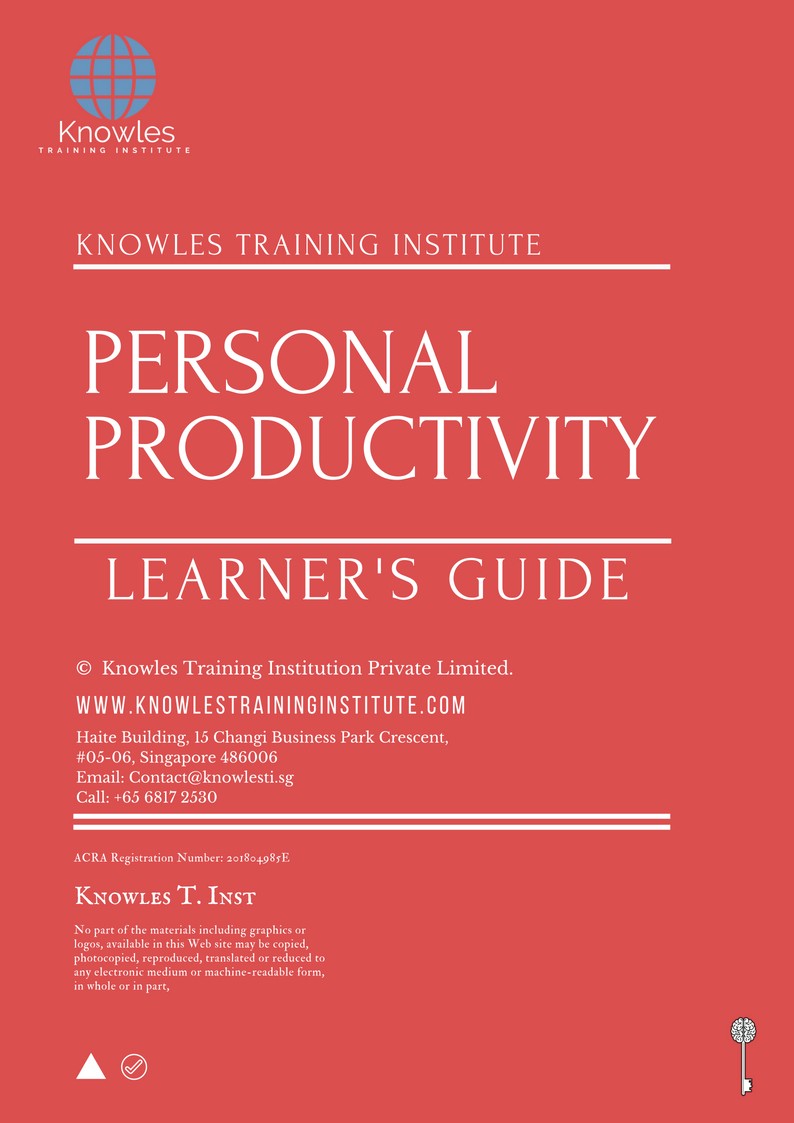
Productivity Training Course in Poland Handouts

Productivity Course in Poland PPT Slides Used During Course

Personal Productivity Training Course in Poland Certification
Each course participant will receive a certification of training completion
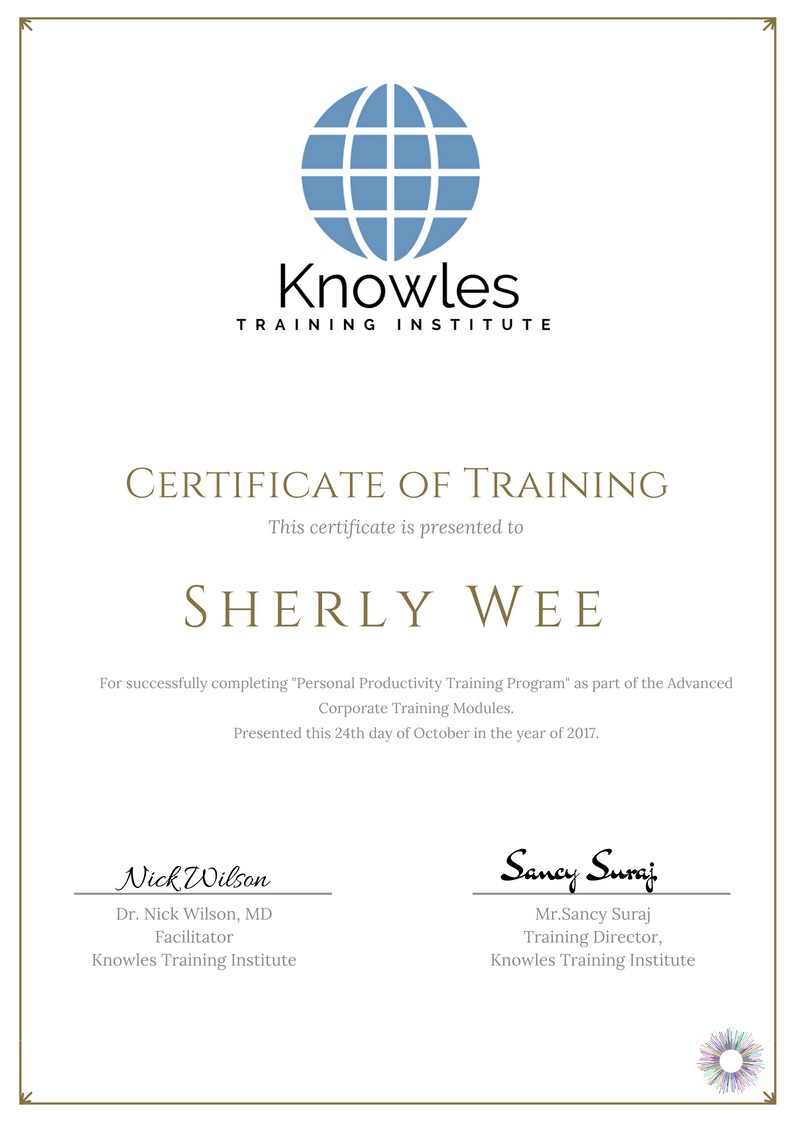
Course Fees For Personal Productivity Course in Poland
There are 4 pricing options available for this Personal Productivity training course in Poland. Course participants not in Poland may choose to sign up for our online Personal Productivity training course in Poland.
USD 679.97 For a 60-minute Lunch Talk Session.
USD 259.97 For a Half Day Course Per Participant.
USD 419.97 For a 1 Day Course Per Participant.
USD 569.97 For a 2 Day Course Per Participant.
Discounts available for more than 2 participants.
Course Facilitator
Our Trainers are Subject Matter Experts.
Our subject matter experts stimulate discussions, generates ideas, foster curiosity and excitement among all of our training participants. All of our trainers have a minimum of 10-20 years in the training industry.
Upcoming Personal Productivity Training Course in Poland Schedule
Contact us for the latest Personal Productivity course in Poland schedules:
Email: contact@knowlesti.pl
Message:
Download Personal Productivity Training Course in Poland Brochure
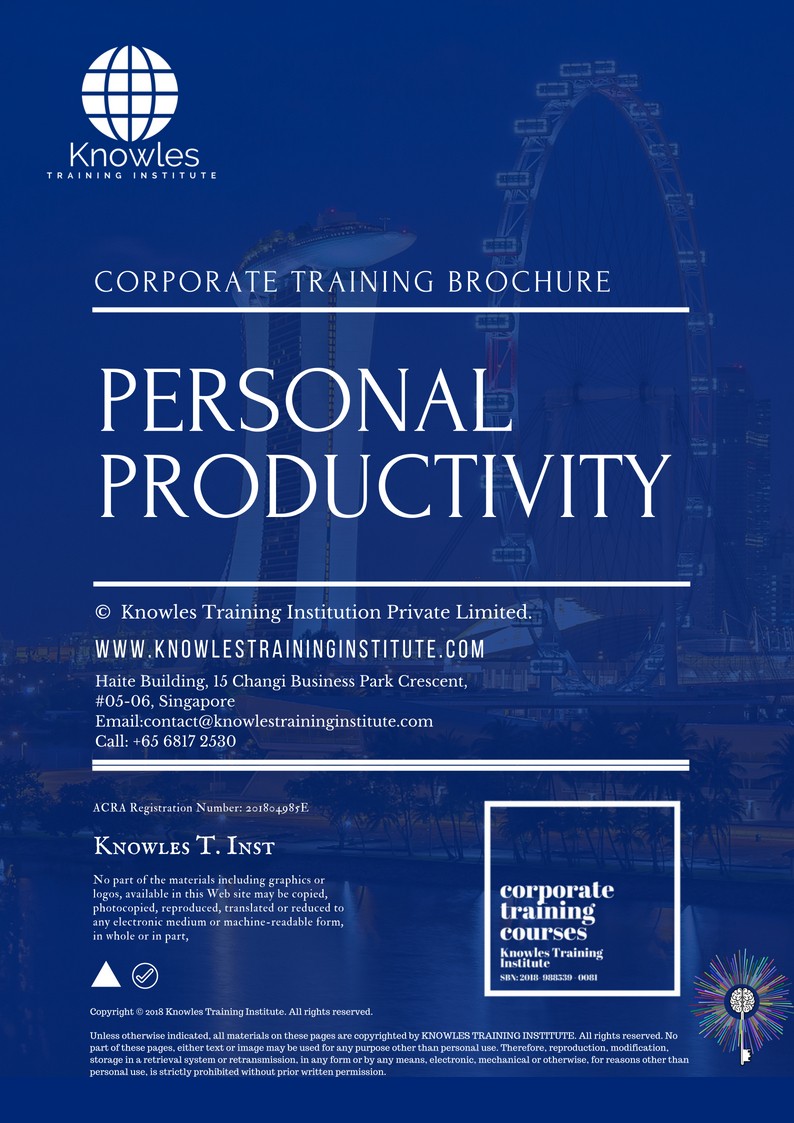
Request for this Personal Productivity course in Poland brochure. Fill up the short information below and we will send it to you right away!
Post Training Support: A vast majority of training does not have any effect beyond 120 days. To work, training has to have a strong pre- and post-training component. Post-training reinforcement helps individuals to recall the understanding and ask questions.
Blended Learning: Learning does not occur in the classroom. Virtually everybody prefers distinct ways of learning. Successful learning should have a multi-channel, multi-modal strategy.
- We Understand The Industry: We’ve got a profound comprehension of the business, business design, challenges, strategy and the that our participants are in and have designed the courseware to cater to their professional needs.
- Course Content: Knowles Training Institute’s material is relevant, of high quality and provide specific learning results. Participants will leave the training course feeling as they have gained a strong understanding and will also be in a position to execute what they have learned sensibly.
Course Development — The workshop modules follow a systematic and logical arrangement. This structure helps to ensure that the course material allows the facilitators to deliver the course in a logical arrangement. Consider the subjects as building bricks into learning, our facilitators slowly build towards a comprehensive picture of this entire topic.
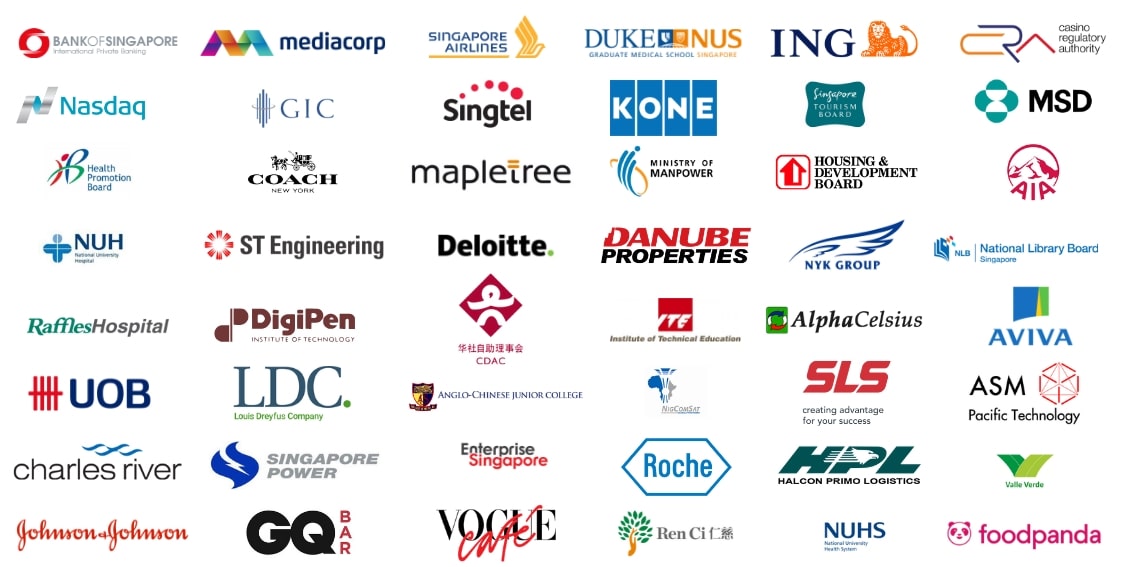
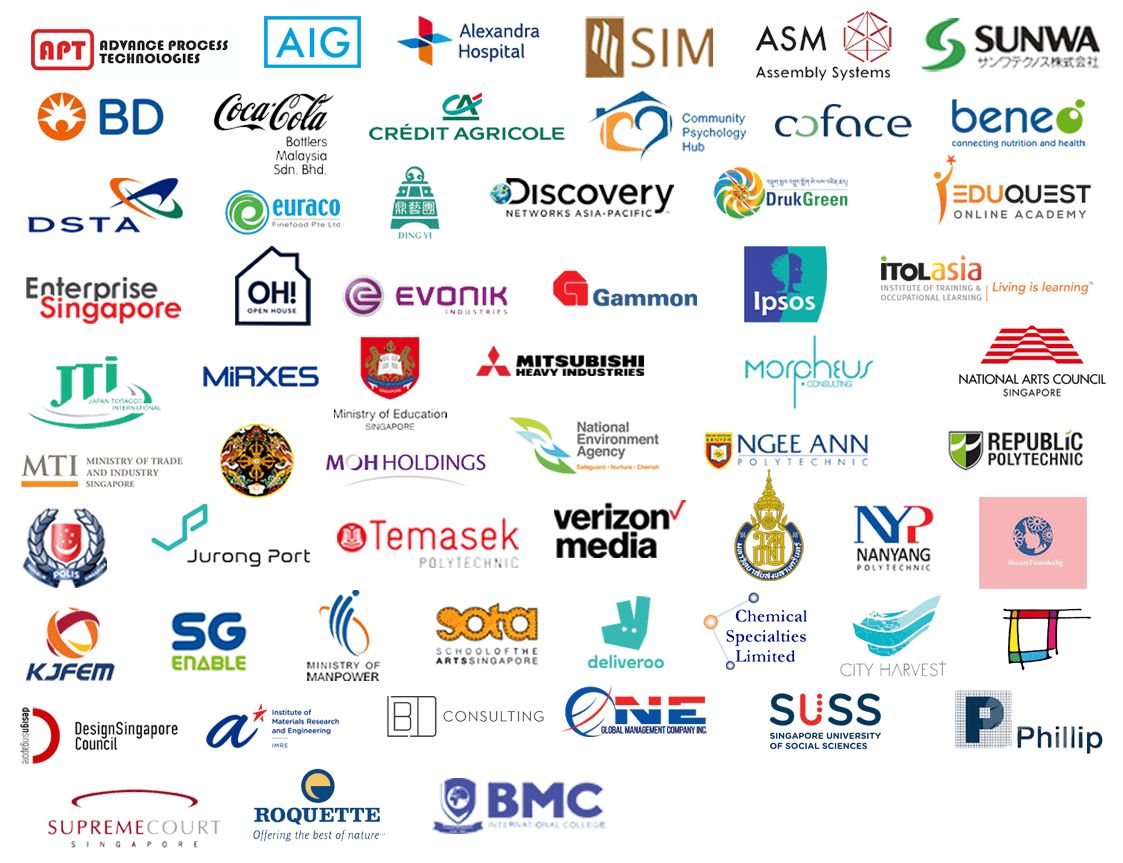
Course Enquiries

Fill up the form and we will get back to you in less than 1 working day.
Alternatively, give us a call to have one of our training consultants contact you. Our corporate training courses can be contextualized to meet your organization’s training needs. Leverage on our large pool of professional trainers and consultants for your organization’s training needs.
Email: contact@knowlesti.pl
We Guarantee 100% Privacy. We Respect Your Privacy. Your Information Will Never Be Shared.
